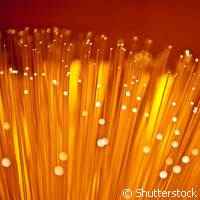Internet of the future could be up to ten times as speedy
We all take accessing the Internet for granted and it has become an indispensible part of every aspect of our lives, but does this limitless connection have a sell by date? Researchers from the EUREKA telecommunications cluster CELTIC-Plus project '100GET (100 Gigabits Ethernet)' seem to think so, which is why they are working on how advancements in delivery are needed beyond laying more optic cables to meet increasing bandwidth demand. EUREKA is a platform for research and development (R&D)-performing entrepreneurs in Europe and is made up of 39 partners including the European Commission. EUREKA Clusters are long-term, strategic public private partnerships with the aim of developing generic technologies of key importance to European competitiveness. Many leading European companies participate in EUREKA Clusters. A consortium of research organisations and companies from across Europe worked on the EUR 65 million project, which was funded partly by the companies themselves and partly by national governments. The team was able to extend capacity from 10 Gigabit Ethernet (GbE) past their initial target of 40GbE all the way to 100GbE. The team kept the focus on both data transfer and networking aspects, and discovered efficiencies that ensure bandwidth capacity for the Internet can be increased dramatically. Dr Kurt Loesch from Alcatel-Lucent Deutschland comments on the project's unexpected success: 'Getting to 100GbE by using the already installed 10GbE infrastructure was a big challenge. At the start of the project, none of us knew if it was even possible. Our target had been 40GbE and even that would have already been challenging. We fixed ourselves limits: essentially, we could only change transmitters and receivers but nothing in between.' These research results come in light of the European Commission's Digital Agenda targets. If these targets are to be met there will need to be an even greater take-up of Internet technologies in Europe than has already occurred, according to the 100GET team. It is estimated that traffic growth in Europe across the Internet's existing infrastructures is currently sitting at a rate of 40 % annually, and as growth is so strong when new bandwidth becomes available it is used almost immediately. The fact that we use so much on-demand video and photo-sharing services is a significant factor in this rate of consumption. Dr Rainer H. Derksen, a senior research scientist at Nokia Siemens Networks, one of the lead partners in the 100GET project, comments: 'Just increasing the amount of optical fibre will not be enough to cope with the current growth in the Internet traffic. We needed to find remedies that allowed us to use the available bandwidth of optical fibre more efficiently.' The explosion in data traffic over the last few years means that the demand for technology that can supply the necessary increased bandwidth from existing infrastructure is driven by capacity rather than price. This demand means that while the potential sales volumes are low, the price is high. Dr Derksen comments on this phenomenon: 'If you need capacity, you buy it as soon as the technology comes onto the market.' This type of research is essential, and makes the possibility of the Internet simply stopping and causing widespread social and economic disruption highly unlikely.For more information, please visit:EUREKA:http://www.eurekanetwork.org/
Countries
Germany



